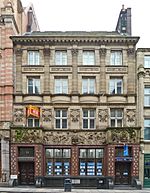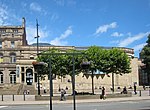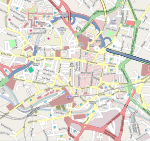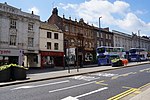The Light, Leeds
Leeds Blue PlaquesListed buildings in LeedsShopping centres in Leeds

The Light is a leisure and retail centre in central Leeds in West Yorkshire, England. It occupies the rectangular space between The Headrow on the south, St Anne's Street on the north, Cookridge Street on the west, and Albion Street. Two former streets divide it: Upper Fountaine Street (east-west) and Cross Fountaine Street (north-south) now covered with a glass roof. It incorporates two listed buildings Permanent House and the Headrow Buildings.
Excerpt from the Wikipedia article The Light, Leeds (License: CC BY-SA 3.0, Authors, Images).The Light, Leeds
The Headrow, Leeds Holbeck Urban Village
Geographical coordinates (GPS) Address Phone number Website Nearby Places Show on map
Geographical coordinates (GPS)
| Latitude | Longitude |
|---|---|
| N 53.7999 ° | E -1.5467 ° |
Address
The Light
The Headrow
LS1 8TL Leeds, Holbeck Urban Village
England, United Kingdom
Open on Google Maps










